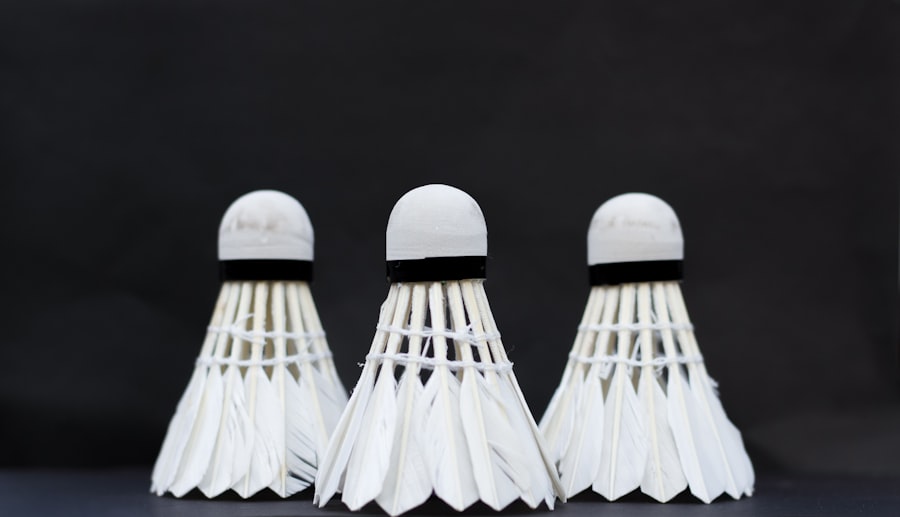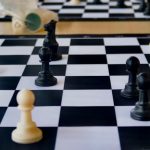Download links
How to install Mastering the Art of Badminton: Tips for Success APK?
1. Tap the downloaded Mastering the Art of Badminton: Tips for Success APK file.
2. Touch install.
3. Follow the steps on the screen.
Description
Badminton is a fast-paced racquet sport that has gained immense popularity worldwide, characterized by its unique blend of agility, strategy, and precision. The game is played either in singles or doubles format, with players using a shuttlecock and racquets to score points by landing the shuttlecock in the opponent’s court. The fundamental objective is to outmaneuver your opponent while adhering to the rules set forth by the Badminton World Federation (BWF).
Understanding the basic rules, scoring system, and court dimensions is essential for anyone looking to engage in this exhilarating sport. The badminton court is rectangular, measuring 13.4 meters long and 6.1 meters wide for doubles play, while singles play narrows the width to 5.18 meters. The net, which stands at 1.55 meters high at the center, divides the court into two equal halves.
Players score points by successfully hitting the shuttlecock over the net and into the opponent’s side of the court. The game is played to 21 points, with players needing to win by a margin of at least two points. Understanding these basic elements lays the groundwork for developing more advanced skills and strategies as players progress in their badminton journey.
Key Takeaways
- Badminton is a fast-paced racket sport played with a shuttlecock, requiring agility, speed, and precision.
- Proper footwork and movement are essential for success in badminton, including quick changes in direction and efficient court coverage.
- Perfecting your grip and swing technique is crucial for generating power and accuracy in your shots.
- Improving your serve and return skills can give you a competitive edge and control over the game.
- Mastering net play and smashes can help you dominate the game and put pressure on your opponents.
Developing Proper Footwork and Movement
Footwork is a critical component of badminton that can significantly influence a player’s performance on the court. Effective footwork allows players to position themselves optimally for each shot, ensuring they can respond quickly to their opponent’s actions. The foundation of good footwork lies in maintaining a low center of gravity, which enhances balance and stability.
Players should practice moving in all directions—forward, backward, and laterally—while keeping their knees slightly bent and their feet light on the ground. One effective drill for improving footwork involves shadowing movements without a shuttlecock. Players can practice moving to various positions on the court, simulating shots they would make during a match.
This exercise not only helps in developing muscle memory but also enhances cardiovascular fitness. Additionally, incorporating agility ladders or cones into training sessions can further refine foot speed and coordination. By focusing on these aspects of movement, players can ensure they are always in the best position to execute their shots effectively.
Perfecting Your Grip and Swing Technique

The grip is one of the most fundamental aspects of badminton that directly affects a player’s ability to control their shots. There are primarily two types of grips used in badminton: the forehand grip and the backhand grip. The forehand grip is typically used for most shots, including serves and smashes, while the backhand grip is essential for returning shots that come to the player’s non-dominant side.
To achieve a proper forehand grip, players should hold the racquet as if they are shaking hands with it, ensuring that their thumb is placed flat against the back of the handle for added support. Swing technique is equally important in executing powerful and accurate shots. A well-executed swing involves a combination of wrist action, arm movement, and body rotation.
For instance, when performing a smash, players should initiate the swing from their shoulder while allowing their wrist to snap at the point of contact with the shuttlecock. This technique generates maximum power and speed.
Improving Your Serve and Return
| Metrics | Serve | Return |
|---|---|---|
| First Serve Percentage | 65% | 70% |
| Average Serve Speed | 120 mph | 110 mph |
| Winning Percentage on First Serve | 80% | 75% |
| Winning Percentage on Second Serve | 60% | 55% |
| Return Points Won | 40% | 45% |
The serve is one of the most critical shots in badminton, as it sets the tone for each rally. A well-executed serve can put pressure on opponents right from the start, while a poor serve can lead to easy points for them. There are various types of serves in badminton, including high serves, low serves, and flick serves.
High serves are typically used in singles play to push opponents to the back of the court, while low serves are more common in doubles play to create opportunities for quick attacks at the net. To improve serving skills, players should focus on consistency and placement. Practicing serves from different positions on the court can help players become more versatile in their serving techniques.
Additionally, understanding when to use each type of serve based on the opponent’s positioning and playing style can provide a strategic advantage. On the return side, players must be prepared to react quickly to their opponent’s serve. Developing a keen sense of anticipation and positioning can significantly enhance a player’s ability to return serves effectively.
Mastering Net Play and Smashes
Net play is an essential aspect of badminton that requires finesse and precision. Players must be adept at executing delicate shots such as net drops and lifts while also being prepared to defend against their opponent’s attacks at the net. Mastering net play involves developing quick reflexes and an acute sense of timing.
Players should practice moving swiftly to the net after serving or returning a shot, ready to capitalize on any opportunities that arise. Smashes are another critical component of badminton that can turn the tide of a match in an instant.
To execute an effective smash, players must focus on generating power through their legs and core while maintaining proper form throughout the swing. Practicing smashes from various angles and heights can help players become more versatile in their attacking strategies. Additionally, understanding when to use a smash versus other shots can be crucial in maintaining an offensive edge during rallies.
Enhancing Your Defensive Skills

Defensive skills are just as important as offensive techniques in badminton. A strong defense allows players to withstand aggressive attacks from opponents while creating opportunities for counterattacks. Key defensive skills include effective footwork, anticipation, and shot placement.
Players must be able to read their opponent’s movements and predict where they will hit the shuttlecock next. One effective way to enhance defensive skills is through drills that focus on reaction time and agility. For example, players can practice defending against a series of smashes or fast-paced shots from a partner or coach.
This not only improves reflexes but also helps players develop strategies for returning difficult shots effectively. Additionally, incorporating defensive tactics into match play can help players become more comfortable with transitioning between offense and defense during rallies.
Mental Strategies for Success
Mental fortitude plays a significant role in achieving success in badminton. The ability to maintain focus, manage stress, and stay positive during matches can greatly influence performance levels. One effective mental strategy is visualization, where players mentally rehearse their shots and strategies before stepping onto the court.
This technique helps build confidence and prepares players for various scenarios they may encounter during a match. Another important aspect of mental preparation is developing resilience in the face of adversity. Badminton matches can be unpredictable, with momentum shifting rapidly between players.
Learning how to stay composed during challenging moments—such as when facing a deficit—can make all the difference in securing victory. Techniques such as deep breathing exercises or positive self-talk can help players maintain their composure and focus on executing their game plan effectively.
Training and Conditioning for Peak Performance
To excel in badminton, players must prioritize training and conditioning as part of their overall development strategy. A well-rounded training regimen should include not only skill development but also strength training, cardiovascular conditioning, and flexibility exercises. Strength training is particularly important for enhancing power in shots like smashes while also reducing the risk of injury.
Cardiovascular conditioning is essential for maintaining stamina throughout matches, especially during long rallies or extended games. Incorporating interval training into workouts can help improve both aerobic and anaerobic fitness levels, allowing players to sustain high energy levels during intense matches. Flexibility exercises such as stretching or yoga can enhance range of motion and prevent injuries associated with repetitive movements common in badminton.
In conclusion, mastering badminton requires a comprehensive approach that encompasses technical skills, physical conditioning, mental strategies, and an understanding of game dynamics. By focusing on these areas systematically, players can elevate their performance levels and enjoy greater success on the court.
FAQs
What is badminton?
Badminton is a racquet sport played by either two opposing players (singles) or two opposing pairs (doubles), who take positions on opposite halves of a rectangular court divided by a net.
What equipment is used in badminton?
The primary equipment used in badminton includes a shuttlecock (also known as a birdie), badminton racquets, and a net. Players also typically wear appropriate athletic clothing and non-marking shoes.
What are the basic rules of badminton?
The basic rules of badminton include serving diagonally, scoring points by landing the shuttlecock within the opponent’s court, and winning a match by winning two out of three games.
What are the health benefits of playing badminton?
Playing badminton can provide numerous health benefits, including improved cardiovascular fitness, agility, coordination, and flexibility. It also helps in burning calories and can be a great way to stay active and fit.
What are the different types of badminton shots?
Some of the different types of badminton shots include the clear, drop shot, smash, drive, and the lob. Each shot has its own specific technique and purpose in the game.
What are the different types of badminton tournaments?
There are various types of badminton tournaments, including local, national, and international competitions. The most prestigious international tournaments include the All England Open, BWF World Championships, and the Olympic Games.





